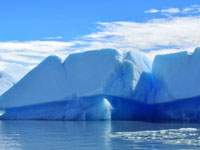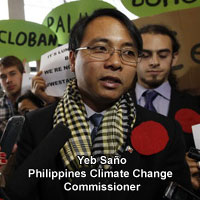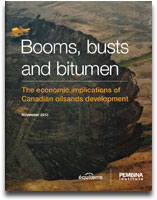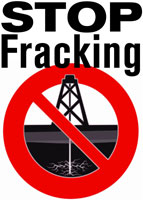
News |
- Canadian Women - Leaders in Sustainability
- Yukon - NWT Board Requires Arctic Drilling Proposal Review
- Birds Reach New Endangered High - 2013 IUCN Red List
- Uncertain Times for Hudson Bay Polar Bear Population
- Unifor Calls For Fracking Moratorium
- Fossil Fuel Divestment Builds At Climate Talks
- Philippines Demands Action Climate At UN Climate Talks
- Oilsands Means More Economic Risk: Report
- Keeyask Generation Hearings Held Over
- Love Canal Still Toxic After 35 Years
- Newfoundland and Labrador: Fracking Moratorium
- Super Storm Sandy: One Year Later
| Canadian Women - Leaders in Sustainability | 13 December 13 |

These women excel in numerous sectors, holding highly instrumental positions in business, environment, indigenous rights and activism, and the legal sector. Front-runners in business for sustainability include: Kathy Bardswick, CEO of Co-operators Group; Emmie Leung, founder and CEO of Emterra; Vicky Sharpe, CEO of Sustainable Development Technology Canada; Annette Verschuren, CEO and Chair of NRStor; Tamara Vrooman, CEO of Vancity; and Andrée-Lise Méthot, Founder and Managing Partner Cycle Capital Management. Lise DeMarco, a partner of the firm Norton Rose Fullbright, and is an international carbon transaction lawyer. Her influence in the drafting of energy and greenhouse gas emissions policy and law is a driving force. Tzeporah Berman, a renowned environmentalist and author, has a broad impact on environmental, First Nations, and philanthropic groups as a strategic advisor. She is also the executive director and co-founder of ForestEthics, a non-profit organization aimed at protecting endangered forests, wildlife, and human wellbeing. Julia Langer is CEO of the Toronto Atmospheric Fund, an arms length organization that strives to reduce local greenhouse gases and air pollutants. Finally, most Canadians are familiar with the name Elizabeth May - a woman who first had a 20 year career with the Sierra Club, then brought the Green Party of Canada to the federal stage and who is an active and progressive political party leader. May's attention to some issues that other parties often overlook brings heightened environmental awareness to the Canadian psyche, allowing for that essential bridge from public interest to policy. View December 3, 2013 Corporate Knights articleVisit Green Party of Canada website Visit Forest Ethics website Visit Sierra Club Canada website Source:
Corporate Knights
|
|
 Print version Print version |
Top |
| Yukon - NWT Board Requires Arctic Drilling Proposal Review | 29 November 13 |

Imperial Oil, BP, and Exxon are in the joint venture which filed application to carry out exploratory drilling in the deep waters of Canada's Beaufort Sea. If approved, the project would allow for wells to be drilled in waters as deep as 850 metres, far deeper than anything ever attempted in Arctic waters. The EISC highlighted in their decision letter a number of serious deficiencies in the proposal: incomplete information about the project; no management plan; lack of detail on measures to prevent and respond to oil spills; inadequate inventory of environmental values; and inadequate consultation with Inuvialuit communities. They required the project to go through a full review by the Environmental Impacts Review Board, with the directive that these deficiencies be addressed. WWF Canada, with Ecojustice as legal counsel, has been an active party to the public reviews to date including before the National Energy Board, and will participate in the reviews now demanded by the EISC. View November 28, 2013 World Wildlife Fund blog postView November 20, 2013 Environmental Impact Screening Committee letter View 2011 National Energy Board report |
|
 Print version Print version |
Top |
| Birds Reach New Endangered High - 2013 IUCN Red List | 29 November 13 |

IUCN assesses species based on a risk scale ranging from Least Concern to Critically Endangered, with the latter category encompassing species that are facing a very high risk of disappearing from the wild. "Almost 200 species of bird are now in real danger of being lost forever," said Dr. Leon Bennun, the Director of Science, Policy and Information at Birdlife. "They are being hit on multiple fronts. Habitat loss, agricultural changes, invasive species and climate change are the principle threats. Without these problems being addressed the list will continue to grow." Climate change, is receiving special recognition recently from the IUCN, with new measures being undertaken to specifically address climate change impacts to species' survival. View November 26, 2013 Birdlife International articleView November 18, 2013 IUCN Red List article Visit IUCN Redlist website
Source: IUCN Red List
|
|
 Print version Print version |
Top |
| Uncertain Times for Hudson Bay Polar Bear Population | 29 November 13 |

But scientists have observed over the course of almost 30 years, the Western Hudson Bay polar bear population has dropped over 30% from 1,200 bears in 1987 to roughly 850 bears at present. Especially concerning to biologists is that the rate of birth and survival of cubs is dropping. Additionally, the body condition of polar bears is steadily worsening, with skeletal-looking bears being seen more frequently, according to Ian Stirling, a wildlife biologist from the University of Alberta. In fact, the effects of this 'extended starvation' are manifesting themselves dramatically – female polar bears are on average 88 pounds lighter than they were in the 1980's. The worsening condition of this polar bear population can be traced to climate change caused early breakup of spring ice and later formation of fall ice. Over the past 30 years, the ice-free season has increased by roughly a day per year. The 2012 ice-free season was 143 days. Scientists predict that by 160 days of no ice each year, the polar bears may no longer be able to survive. View Novmember 27, 2013 The Guardian articleView November 22, 2013 National Geographic article View November 21, 2013 The Guardian article
Source: The Guardian
|
|
 Print version Print version |
Top |
| Unifor Calls For Fracking Moratorium | 15 November 13 |

Unifor is raising concerns about the safety and environmental risks associated with fracking as well as the lack of informed consent by First Nations about fracking activities on traditional lands. In the statement unanimously passed by the 25-person Unifor National Executive Board, the union expressed support for the non-violent protest efforts by First Nations to resist fracking activity on their lands. The Unifor National Executive Board is made up of elected representatives from across the country and a variety of economic sectors, including energy. "Unconventional gas fracking has the potential to have catastrophic effects on our environment and economy. The safety risks are also a major concern for our union," said Unifor National President Jerry Dias. "Just because we can carry out this activity does not mean we should. We must enact a national moratorium on fracking activity." View November 14, 2013 Unifor articleView November 14, 2013 Canada.com article View November 11, 2013 Rabble.ca article View October 21, 2013 Global Research article |
|
 Print version Print version |
Top |
| Fossil Fuel Divestment Builds At Climate Talks | 15 November 13 |

"It's time to start treating the fossil fuel industry like Big Tobacco," said May Boeve, executive director of 350.org, an international climate campaign. "When it comes to the UN Climate Talks, the fossil fuel companies aren't just looking for a seat at the table, they're looking to burn the table down. Until we can challenge their political power, we won't see real climate progress." The situation for the fossil fuel industry will only get worse. According to a slew of recent reports by institutions like the World Bank, HSBC, and the Intergovernmental Panel on Climate Change, 60-80% of current fossil fuel reserves must stay underground in order to limit global warming to below 2°C. The divestment campaign is based on the belief that if we are to stay below 2°C of warming, we cannot emit more than 565 gigatons of carbon dioxide in the future. Fossil fuel companies have more than five times that amount in coal, oil and gas reserves. View November 15, 2013 Yale Daily News articleView November 13, 2013 350.org article View November 12, 2013 YES! Magazine article View November 12, 2013 350.org article View October 31, 2013 The Guardian article View October 23, 2013 The Huffington Post article View Fossil Free Canada website |
|
 Print version Print version |
Top |
| Philippines Demands Action Climate At UN Climate Talks | 15 November 13 |

"To anyone who continues to deny the reality that is climate change, I dare you to get off your ivory tower and away from the comfort of you armchair," Sano said. The negotiator spoke emotionally about the devastation that the typhoon had caused across the Philippines, and then made the direct link to the climate crisis. "What my country is going through as a result of this extreme climate event is madness." said Yeb Sano, Philippines lead negotiator "The science has given us a picture that has become much more in focus," he said. "The IPCC report on climate change and extreme events underscored the risks associated with changes in the patterns as well as frequency of extreme weather events. Science tells us that simply, climate change will mean more intense tropical storms. As the Earth warms up, that would include the oceans. The energy that is stored in the waters off the Philippines will increase the intensity of typhoons and the trend we now see is that more destructive storms will be the new norm." View November 13, 2013 Responding to Climate Change articleView November 11, 2013 Common Dreams article View November 11, 2013 Common Dreams article View November 10, 2013 The Big Story article View Oxfam's Philippines Typhoon Haiyan page |
|
 Print version Print version |
Top |
| Oilsands Means More Economic Risk: Report | 15 November 13 |

Booms, Busts and Bitumen: The economic implications of Canadian oilsands development looks at the side effects of the oilsands boom in uncertain economic times and presents a counterpoint to the frequently overstated economic benefits of oilsands expansion. The report indicates that the overwhelming majority of economic benefits — both direct and indirect — are limited to Alberta. Other provinces will benefit less: even the United States would gain more employment opportunities from the oilsands than the rest of Canada if projected oilsands development goes ahead. Meanwhile, the economic side effects of the oilsands boom, such as a high dollar that makes it harder for manufacturers to compete globally, are being felt across the country. If the $1.3 billion in government subsidies given to the oil and gas sector, were invested in renewable energy and energy efficiency, Canada would create 18,000 jobs. View November 13, 2013 Pembina Institute media releaseView November 13, 2013 Équiterre article View November 2013 Équiterre and Pembina Institute article View November 2012 BLUE GREEN CANADA report View February 24, 2013 Edmonton Journal article |
|
 Print version Print version |
Top |
| Keeyask Generation Hearings Held Over | 8 November 13 |

The panels of Hydro experts have almost finished their presentations. Cross-examination from participants and the Commission follow each panel's presentations. Some but not all participants have legal counsel. Panels are based on the volumes and topics in the Environmental Impact Statements and supplementary filings for the project, under Manitoba's Environment Act. Starting November 12 participants will bring in their independent expert witnesses, especially in areas such as woodland caribou, sustainability, cumulative assessment, water quality, mercury poisoning, and flooding from Manitoba's hydro system. These witnesses and experts will be informing the CEC for about 4 weeks. CEC hearings are open to the public, and being held at the Hotel Fort Garry in downtown Winnipeg. Manitoba Wildlands posts a daily summary during the hearings on its fb wall. Other products are being developed during the hearings, including a CEC Chart of all Keeyask Generation documents, events, decisions, etc. Watch the brag box on the ManitobaWildlands.org news page for posts. View more information on Manitoba Wildlands Keeyask Generation Project pageView Manitoba Wildlands Keeyask Chronology Chart View Keeyask Hydropower Limited Partnership website View Manitoba Clean Environment Commission Hearings page |
|
 Print version Print version |
Top |
| Love Canal Still Toxic After 35 Years | 8 November 13 |

"We're stuck here. We want to get out," said 34-year-old Dan Reynolds, adding that he's been plagued by mysterious rashes and other ailments since he moved into the four-bedroom home purchased a decade ago. His wife, Teresa, said she's had two miscarriages and numerous unexplained cysts. Love Canal's notorious history began when Hooker Chemical Co. used the abandoned canal from 1942 to 1953 to dump 21,800 tons of industrial hazardous waste. That canal was later capped, and homes and a school were built on top of it. But snow melt from an unusually harsh winter in 1977 seeped into the buried 16-acre canal and forced chemical waste into groundwater and to the surface, oozing into yards and basements. Residents in recent years have complained of foul chemical odours and illnesses among people and pets. A multimillion-dollar state lawsuit has been filed claiming that the chemical landfill is leaking. View November 3, 2013 Tulsa World articleView November 2, 2013 National Post article View October 22, 2013 The Buffalo News article View October 20, 2013 Newsweek article View February 9, 2013 The Buffalo News article View Love Canal Chronologies |
|
 Print version Print version |
Top |
| Newfoundland and Labrador: Fracking Moratorium | 8 November 13 |

"Our first consideration is the health and safety of our people," Dalley said in the house of assembly. "In making this decision, our government is acting responsibly and respecting the balance between economic development and environmental protection." The province has not yet received formal applications to frack wells in western Newfoundland although exploration licences have been granted in what's known as the Green Point shale near Gros Morne National Park. The prospect of drilling in one of the province's prime tourism destinations has set off intense debate. It has also raised concerns about groundwater pollution and other risks. Hydraulic fracturing, also known as fracking, involves pumping water, nitrogen, sand and chemical additives at high pressure to fracture shale rock formations and allow gas or oil to flow through well bores to the surface. View November 8, 2013 The Telegram articleView November 5, 2013 The Telegram article View November 4, 2013 Global News article View November 4, 2013 CBC News article |
|
 Print version Print version |
Top |
| Super Storm Sandy: One Year Later | 8 November 13 |

Superstorm Sandy ravaged New York City's waterfront. The Rockaway Peninsula in Queens still bears the scars. Houses damaged by floodwaters sag with rot and mold. Businesses are shuttered. The beach's miles-long boardwalk is gone. One year later, the residents there face a difficult dilemma between staying and leaving, as the reality of climate change and the fears of another Superstorm are now a daily part of life. The storm has revealed the inadequacy of New York City and the United States’ ability to handle climate-related weather extremes. With the largest typhoon in recent recorded history bearing down on the Philipines, Typhoon Haiyan, do we really need more superstorms to tell us the world’s climate is changing? View November 4, 2013 Institute of Electrical and Electronics Engineers articleView October 29, 2013 Inside Climate News article Watch October 29, 2013 Inside Climate News video View October 29, 2013 Huffington Post article View October 28, 2013 USA Today article View October 28, 2013 National Post article |
|
 Print version Print version |
Top |


 RSS Feeds:
RSS Feeds: